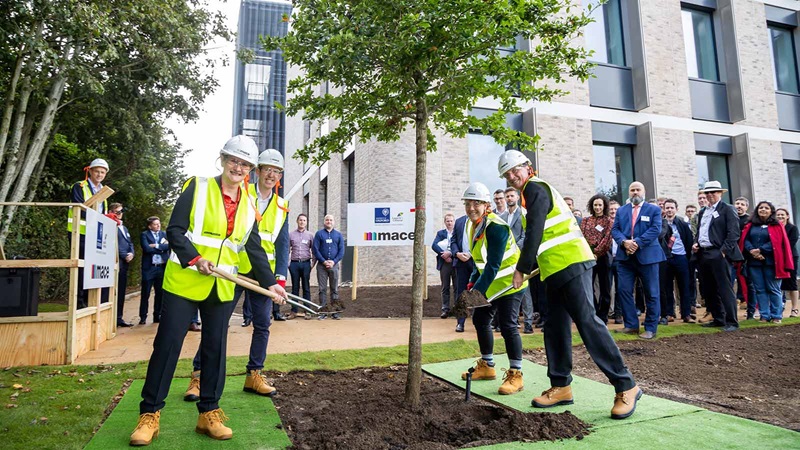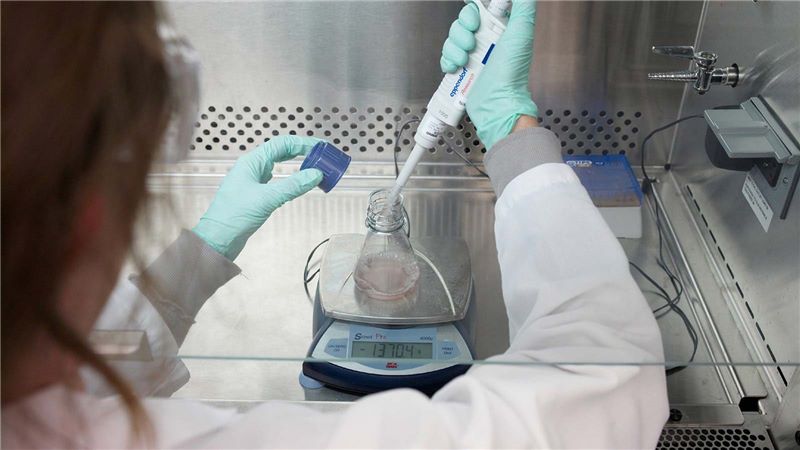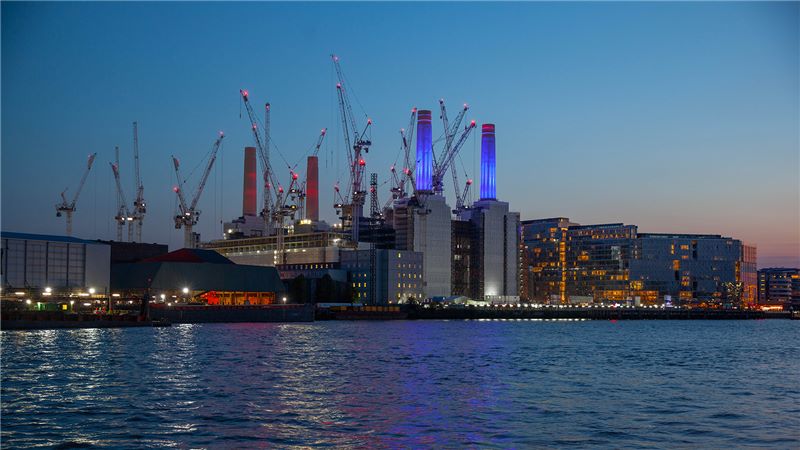Tree planted at Begbroke Science Park to mark structural completion of new University science buildings
A tree-planting ceremony has taken place at Begbroke Science Park, marking the completion of major structural work on two new buildings that are under construction there to provide new space for research and innovation.
This £59m project is the latest milestone in the wider £4 billion partnership between the University of Oxford and Legal & General (L&G). It is managed by Oxford University Development (OUD).
The new buildings at Begbroke are expected to be ready for handover by main construction partner Mace in early 2024, providing around 12,500m2 of highly flexible new office and laboratory space and almost doubling the Science Park’s usable internal area. One of them will be occupied by University academic groups; the other will hold research spinouts and other innovative private sector partners.
Professor Irene Tracey, Vice-Chancellor of Oxford University said, ‘Begbroke Science Park is a vital part of the University's research and innovation infrastructure. It's also a key enabler of our future development, as we seek to build on its unique strengths in bringing together science and industry to harness our researchers' world-leading expertise and tackle an ever-wider range of real-world challenges. These two new buildings will provide a fantastic new setting for science, collaboration and knowledge-sharing, creating new jobs and supporting the growth of Oxford’s flourishing innovation economy.’
Professor Tracey, L&G Group Chief Executive Sir Nigel Wilson, OUD CEO Anna Strongman and Rob Lemming, Director of Life Sciences and Pharmaceuticals Construction at Mace, planted a Nyssa sylvatica or black tupelo tree. This will form a focal point in the landscaped green space around the two new buildings.
The new facilities will help the University to build on Begbroke’s impressive track record of fostering research breakthroughs and the development of new and transformative technologies. The Science Park has helped to enable an extraordinary range of scientific activities, many of which have spun out into globally successful companies in their own right.
These include Oxa, a world-leader in autonomous vehicle software; Oxford PV, pioneer of low-cost, highly efficient solar photovoltaic technology, and Oxford Nanopore, whose revolutionary DNA sequencing technology propelled them to the UK’s largest-ever spinout IPO in 2021.
In the longer term, the University and its joint venture partners are also moving forwards with a much more ambitious set of plans to create a unique innovation district with the expanded Science Park at its heart.
The aspiration is to create a vibrant new community built on research, innovation and sustainability, with large amounts of additional R&D space, as well as around 1,800 affordable, energy-efficient new homes for both University staff and the public, and superb local amenities including schools, nurseries, sports and leisure facilities, shops, cafes and new sustainable transport links – all set amid wildlife-friendly green space that will help increase biodiversity on the site by at least 20%.
OUD submitted an outline planning application for the innovation district over the summer, and a response is expected in early 2024.
Contact us
-
Mace Media Line
+44 20 3824 3600Email












